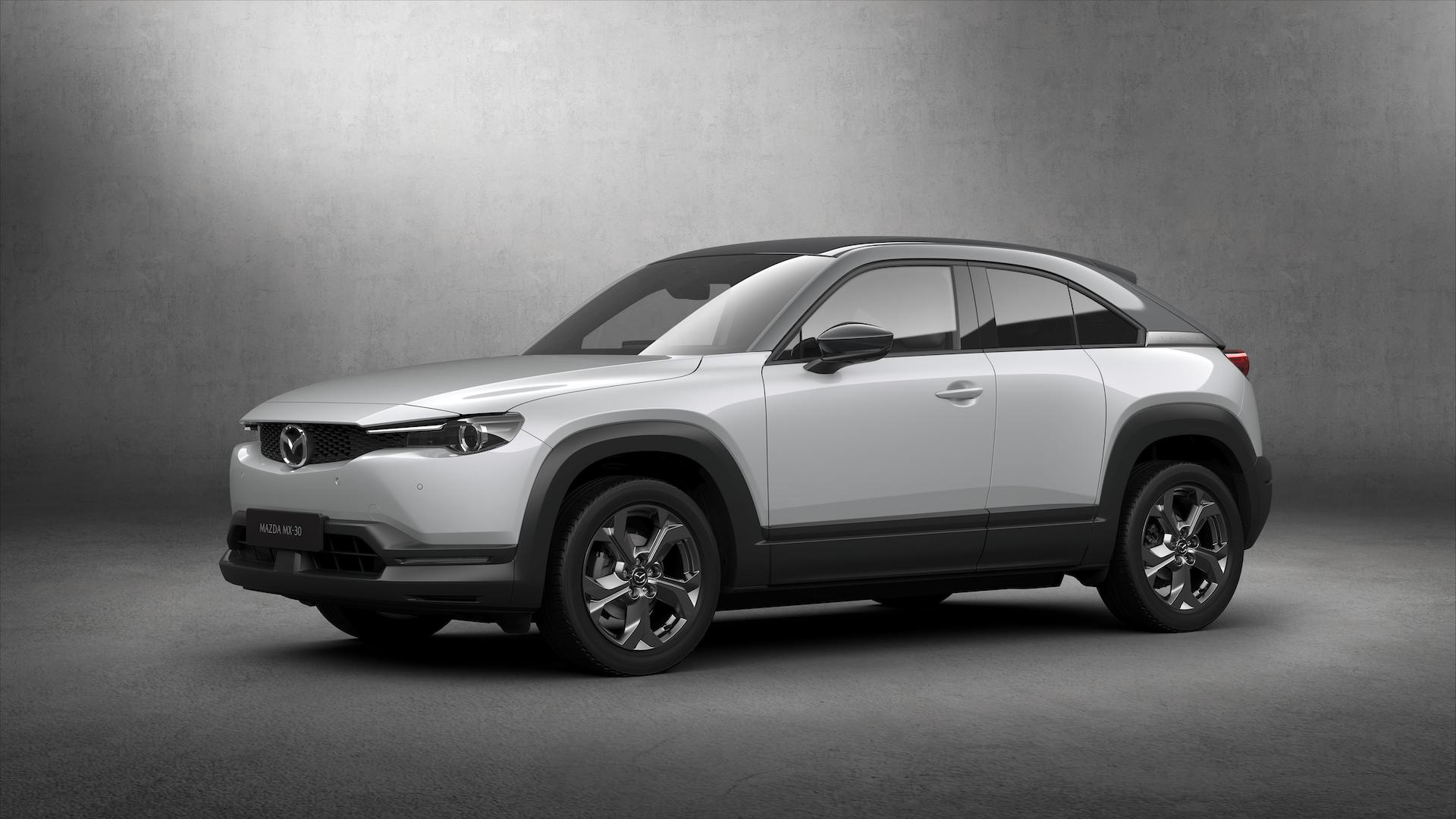

When Mazda revealed its first mass-market electric vehicle, the MX-30, the world glossed over its avant-garde design details like suicide doors and sustainably sourced interior materials to focus on its weakest attribute: Range.
With just 124 miles (WLTP) of range, the MX-30’s reach falls short of many consumer’s preconceptions on range needed. Given that fear of running out of juice, why did Mazda seemingly handicap the MX-30 and potentially turn off even EV-friendly car buyers? According to Christian Schultze, the director of Mazda Europe’s R&D center, the MX-30’s 35.5-kWh battery isn’t inadequate; it’s “responsibly” sized.

Schultze told Automotive News Europe that Mazda calculated the long-term carbon impacts of EVs with small batteries versus those with large (using 95 kWh as an example), and found that regardless of battery size, EVs leave the production line with an environmental debt to pay. Assuming Mazda’s chart (below) correlates accurately with its math, a 35.5-kWh MX-30 with zero miles on it has already had an environmental impact approximately equal to that of a diesel Mazda3 with about 26,000 miles on it and that’s not nothing.
An EV with a 95-kWh battery, Mazda suggests, has a carbon debt equivalent to an approximately 72,000-mile diesel Mazda3, and it will make up lost ground more slowly than a small-battery EV because it has to use a little extra energy to lug around that bulky battery. More energy use means more electricity generation, and more drain on the electrical grid means a greater net carbon impact.

Mazda reached this conclusion based on a model that predicts an EV will need a battery replacement at 100,000 miles, though admittedly, this doesn’t make sense for EVs with larger batteries. Automakers don’t just stuff the biggest possible packs into their EVs to increase range; larger batteries also suffer slower degradation given equal driving conditions, and should theoretically offer longer service intervals.
Between unverified accounts of Teslas accumulating hundreds of thousands of miles on their original batteries with minimal degradation, Mazda’s questionable battery replacement interval, and doing what math teachers call not showing your work, we have reason to doubt Mazda’s insinuation that big-battery EVs are inherently less responsible than those with smaller batteries.
This isn’t to say that Mazda can’t be onto something, but until we see its numbers or have access to a larger sample size of high-mileage EVs for a better understanding of battery degradation, we can’t quite trust Mazda’s conclusion. In other words, get out there and put some miles on your EV’s odometer. For science, of course.
Got a tip? Send us a note: tips@thedrive.com
h/t Car and Driver